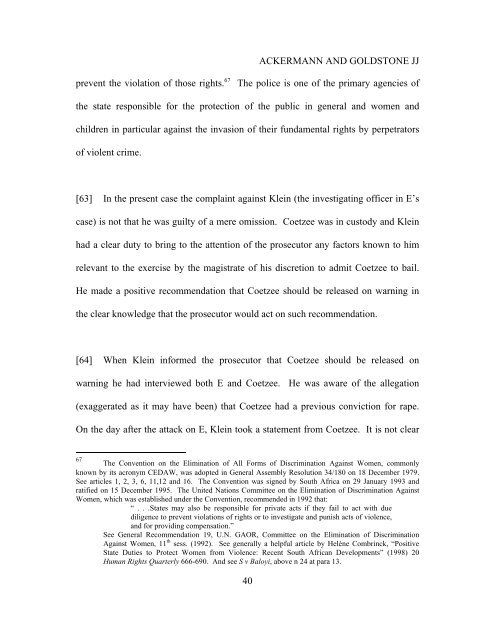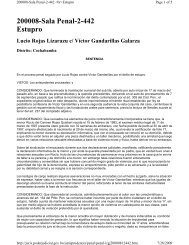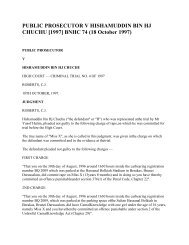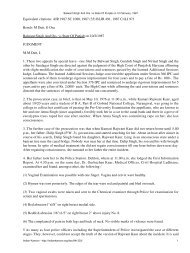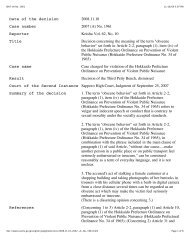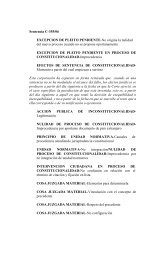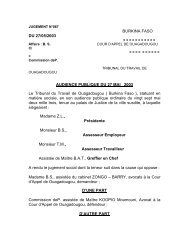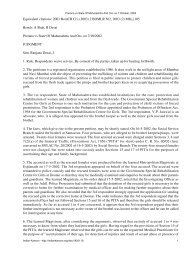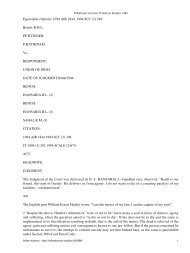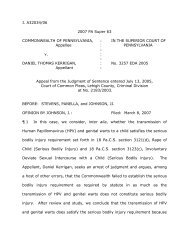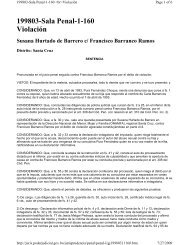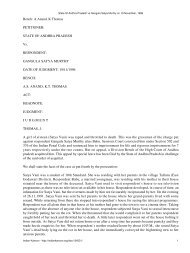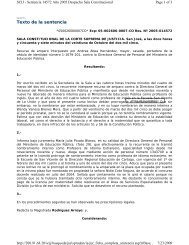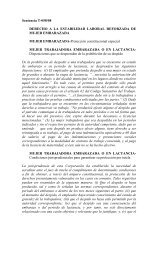CONSTITUTIONAL COURT OF SOUTH AFRICA Case CCT ... - saflii
CONSTITUTIONAL COURT OF SOUTH AFRICA Case CCT ... - saflii
CONSTITUTIONAL COURT OF SOUTH AFRICA Case CCT ... - saflii
Create successful ePaper yourself
Turn your PDF publications into a flip-book with our unique Google optimized e-Paper software.
ACKERMANN AND GOLDSTONE JJprevent the violation of those rights. 67The police is one of the primary agencies ofthe state responsible for the protection of the public in general and women andchildren in particular against the invasion of their fundamental rights by perpetratorsof violent crime.[63] In the present case the complaint against Klein (the investigating officer in E’scase) is not that he was guilty of a mere omission. Coetzee was in custody and Kleinhad a clear duty to bring to the attention of the prosecutor any factors known to himrelevant to the exercise by the magistrate of his discretion to admit Coetzee to bail.He made a positive recommendation that Coetzee should be released on warning inthe clear knowledge that the prosecutor would act on such recommendation.[64] When Klein informed the prosecutor that Coetzee should be released onwarning he had interviewed both E and Coetzee. He was aware of the allegation(exaggerated as it may have been) that Coetzee had a previous conviction for rape.On the day after the attack on E, Klein took a statement from Coetzee. It is not clear67The Convention on the Elimination of All Forms of Discrimination Against Women, commonlyknown by its acronym CEDAW, was adopted in General Assembly Resolution 34/180 on 18 December 1979.See articles 1, 2, 3, 6, 11,12 and 16. The Convention was signed by South Africa on 29 January 1993 andratified on 15 December 1995. The United Nations Committee on the Elimination of Discrimination AgainstWomen, which was established under the Convention, recommended in 1992 that:“ . . .States may also be responsible for private acts if they fail to act with duediligence to prevent violations of rights or to investigate and punish acts of violence,and for providing compensation.”See General Recommendation 19, U.N. GAOR, Committee on the Elimination of DiscriminationAgainst Women, 11 th sess. (1992). See generally a helpful article by Heléne Combrinck, “PositiveState Duties to Protect Women from Violence: Recent South African Developments” (1998) 20Human Rights Quarterly 666-690. And see S v Baloyi, above n 24 at para 13.40


